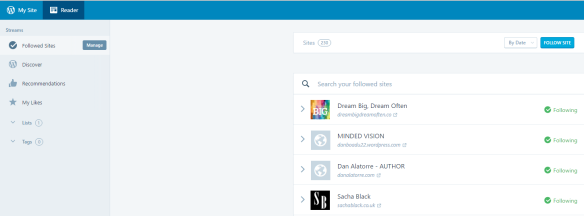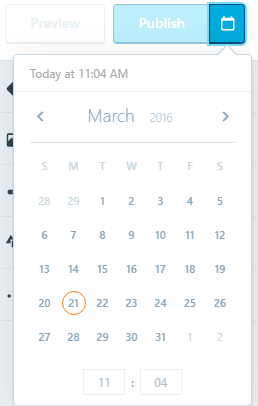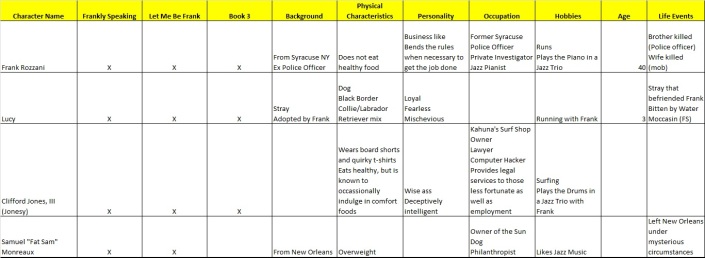
I have had a blog on WordPress for the past two years or so. I started the blog to coincide with the first published writing that I produced. That first year, I didn’t take the blog very seriously. I just used it as a place for announcements about my work with very little other meaningful content. I followed a few others that followed me.
Last year, I was a bit more active. I began sharing information about my experiences with independent publishing in some formalized tips. The participation was sporadic and my efforts resulted in minimal followers.
Beginning in February, I really started to put in some effort on the blog. The results have been good.
Even though I would consider myself a novice at blogging, I am a project manager by trade so organizing tasks is something I’m very familiar with. Those of you that follow me may have noticed that I try to post three blogs today at about 8AM, 12 Noon and 2PM Eastern US time. I have been doing this even though I have a day job that requires travel just about every week and about 50-60 hours of time.
So, even though I’m a newbie, I’ve been able to apply some project management and time management principles to my blogging that just might help you out. I also look forwrd to your suggestions on what you do to manage the time involved in having a happy, healthy blog.
1. Reading, liking, and commenting on the blogs of others
I follow about 230 blogs. I quickly found out that this was overloading my inbox. The reason for this was because I had every blog post set to update me instantly. I went through all of them and made sure that I selected the daily notification option so that I started receiving one digest of each bloggers post each day. To do this, you simply go into the WP reader and select Manage.

You can then select each blog and choose the Daily option:

This results in a daily email for each blogger that you follow that you can work through in your email inbox.
It helps that I am a morning person. I’m usually up at 5:30 AM each morning. After that first cup of coffee, I start working through each daily digest and I view every single blog post.
Luckily, not all 230 blogs that I follow posts every day. There are usually about 100 digests waiting for me and I enjoy going through them. I comment on many. I reblog about 5-10%. and I try to like every single one.
A word about reblogs; I do see a lot of repeat posts in the form of reblogs. I usually try to comment on the original blog and like the reblog. When a blogger reblogs a post from a blogger I don’t follow, I will look at the original blogger’s posting history and may or may not follow them as well. I’ve become more selective because of the sheer number and my desire to devote attention to each one.
Going through my emails takes about 90 minutes each day.
2. Posting blogs regularly with organized, useful content
I promised myself that if I was going to actively use my blog as a platform to supplement my writing, I wanted to accomplish a few things. First, I wanted to help other authors. Second, I wanted to promote my own work, but not in a blatant, spammy way. Finally, I want to engage with other bloggers through discussion.
For the first objective, I’ve been trying to regularly post tips and tricks that I’ve used to navigate independent publishing. Everything from mechanics, quality, promotion, etc. are discussed in my posts. I’ve also started posting author interviews. I am currently on a pace to post three author interviews per week.
In order to promote my own work, I’m doing the usual things and some things that are slightly different. I tell people about my books. I’m trying to limit this and do it indirectly by relaying behind the scenes information or excerpts. I’m also putting content in my blogs. I had the idea in the shower one day to write some serialized fiction on my blog in the tradition of Charles Dickens and Sir Arthur Conan Doyle. I launched my story Road Kill which has new installments each week.
Finally, I’m using things like book reviews, social commentary (rarely) and humor for pure enjoyment and discussion.
This is a lot of content and requires organization so that it doesn’t get stale and repetitive. To accomplish this, like a good geeky project manager, I’ve set up a schedule to make sure that I can plan out my content for each day. Here is a sample of what it looks like.

You can see, that some of the content is fairly definitive, like the interviews, but others are yet to be determined. You’ll also notice that many of them have placeholders for things like reviews and tips that will be filled in later. Finally, You’ll notice that I have a status of pending, scheduled, and posted. The ability to schedule in advance on WP has made this all possible for me. I’m sure that many of you are already aware of how to do this, but just in case, I’ll put up a screen shot:

Once you select a date and time, the ‘Publish’ button will become a ‘Schedule’ button. You simply schedule it and your post will be published on the day and time you selected.
I hope this has been helpful. Some of the more experienced bloggers that read this might feel the urge to pat me on the head and say that they’ve been there and done that.
That’s fine. I’m doing the best that I can based on my experience and what I know. Hopefully this will start a sharing conversation where we can all benefit from the vast experience that is out there.

